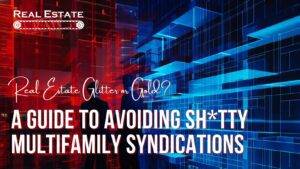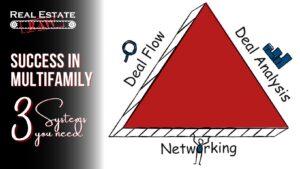As a multifamily real estate investor, you may have heard the term “cap rate compression” thrown around. What exactly does it mean, and how can it benefit your investments? In this article, we’ll explore what cap rate compression is and how it works in multifamily real estate investing.
What is Cap Rate Compression?
Cap rate compression refers to the phenomenon where cap rates (capitalization rates) decrease, resulting in an increase in property values. Cap rates represent the rate of return on an investment property based on its net operating income (NOI). It is calculated by dividing the NOI by the property’s value.
For example, if a multifamily property generates an NOI of $100,000 and its value is $1 million, its cap rate would be 10% ($100,000 / $1,000,000). If the same property generates an NOI of $120,000 but its value increases to $1.5 million, its cap rate would decrease to 8% ($120,000 / $1,500,000).
How Does Cap Rate Compression Work in Multifamily Real Estate Investing?
Cap rate compression occurs when demand for multifamily properties increases, causing investors to bid up the price of properties and drive down the cap rate. As cap rates decrease, the value of the property increases, even if the NOI remains the same. This means that investors can achieve a higher return on their investment by buying a property at a lower cap rate and selling it at a higher cap rate.
Let’s look at a couple of examples to illustrate how cap rate compression works in multifamily real estate investing:
Example 1: A multifamily property generates an NOI of $100,000 and has a cap rate of 8%. Its value would be $1.25 million ($100,000 / 0.08). However, if the cap rate compresses to 6%, the property’s value would increase to $1.67 million ($100,000 / 0.06). This means that an investor who purchased the property at $1.25 million could potentially sell it for $1.67 million, resulting in a profit of $420,000.
Example 2: A multifamily property generates an NOI of $150,000 and has a cap rate of 6%. Its value would be $2.5 million ($150,000 / 0.06). However, if the cap rate compresses to 5%, the property’s value would increase to $3 million ($150,000 / 0.05). This means that an investor who purchased the property at $2.5 million could potentially sell it for $3 million, resulting in a profit of $500,000.
Factors that Drive Cap Rate Compression
Cap rate compression can be driven by a variety of factors, including low interest rates, strong demand for rental housing, and limited supply of available properties. When interest rates are low, investors may be more willing to pay a premium for multifamily properties to achieve higher returns. Strong demand for rental housing and limited supply of available properties can also drive up prices and compress cap rates.
Conclusion
Functionally speaking, cap rate is the measure of how buyers/investors value a stream of revenue (cash flow) produced by an asset like an apartment complex. The more the revenue stream is valued the lower the cap rate.
Cap rate compression can be a beneficial phenomenon for multifamily real estate investors looking to maximize their returns. However, the cap rate you calculate is not enough information solely to make investment decisions. It is important to conduct thorough due diligence and evaluate all factors before making a multifamily real estate investment. By understanding how cap rate compression works and its potential benefits, you can make informed investment decisions and maximize your returns.


































